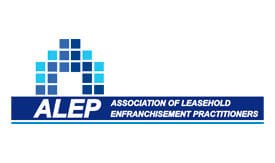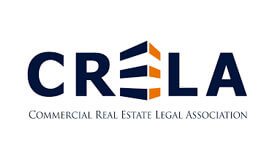On 27 July 2020, due to the ongoing Covid-19 pandemic HM Land Registry have confirmed that they have amended its Practice Guide 8: Execution of deeds to state that it will temporarily accept electronic signatures of registration transfers and other property deeds until further notice, providing that certain requirements have been met.
The changes were implemented as a result of the challenges solicitors and conveyancers experienced when working from home during the pandemic. In normal circumstances, your solicitor or conveyancer would need to be in sight of the physically wet signed deed, which was one of the major obstacles of property conveyancing during lockdown due to the problematic nature of printing, posting and scanning when working from home. The electronic signature approach removes the need of a physical property deed to be signed by wet ink and thus removes the need of circulating physical documents through the post, allowing the conveyancing procedure to be more seamless.
In any event, this was not only necessary during the current pandemic. There has been significant demand in recent years to update the conveyancing process in line with technology so that conveyancers can conduct the whole conveyancing process electronically.
Property deeds that are eligible for electronic signature
The following property deeds are eligible to be signed electronically:
- A deed that affects one of the dispositions referred to in section 27(2) and (3) of the Land Registration Act 2002
- A discharge or release in form DS1 or form DS3
- Equivalent deeds in respect of unregistered land
- An assent of registered or unregistered land
- A power of attorney other than a lasting power of attorney
What are the criteria of the electronic signature?
For Land Registry to accept property deeds that have been electronically signed, the following needs to be met:
- All parties involved in the transaction need to agree on using electronic signatures and the online platform to be used
- All parties must instruct a conveyancer
- The conveyancer is responsible of setting up and managing the signing process on the platform
- The online signing platform used must have two factor authentication when signing the deeds
- The conveyancer must lodge the application to Land Registry online with a PDF version of the completer deed
- When lodging the application, the conveyancer must provide the following certificate: “I certify that, to the best of my knowledge and belief, the requirements set out in Practice Guide 8 for the execution of deeds using electronic signatures have been satisfied.”
The electronic signature process
Conveyancers need to have certain standards and procedures in place where it can securely set up and control the signing process so that they can verify the identification of the signatory and uphold the virtue of the document. Such standards need to be implemented so that the solicitor or conveyancer lodging the application can certify that “to the best of my knowledge and belief, the requirements set out in practice 8 for the execution of deeds using electronic signatures have been satisfied”. This is also known as a ‘conveyancer’s certificate’. It provides a peace of mind to Land Registry that all protocols were adhered to when preventing identity fraud, and at the same time rests any liability associated with the electronic signature process in the hands of the conveyancer.
Your solicitor or conveyancer will upload the property documents to be signed electronically on an online platform, which should then send an email of the link to each signatory. In practice, the conveyancer will need to know the identity of the witness in advance so that the documents can be circulated amongst all parties for signature, which signing platform to use, and who should monitor and control the signing process. Protocols will need to be established to ensure a consistent procedure is in place.
One of the requirements for Land Registry to accept electronic signatures on property deeds is for all parties involved in the transaction to have a conveyancer to act on their behalf. If you decide not to instruct a conveyancer, Land Registry can only accept property deeds with a wet signature.
The online platform being used for the electronic signature must have two-factor authentication checks for the signatory to verify their identity to ensure the documents are sent to the signatory and that only the signatory can view and sign the documents. The link in the email should be protected by a one-time password. The signatory will be sent a one-time password by text message to their mobile which they should enter to open the link and access the deed.
The signatories would review the documents and electronically sign the deeds in the physical presence of a witness, who would then also need to sign the document electronically. For attestation purposes, a witness should be present when the signatory signs the property deeds. The Land Registry will only accept an electronic signature so long as it is witnessed in presence of an individual who would also need to sign the document electronically. Forms of remote witnessing such as a video link are not allowed for electronic or wet signatures. The online platform should record the date and time of each electronic signature so that there is an audit trail.
Once signed, your solicitor or conveyancer shall receive an email prompt notifying that the deeds have been signed. If the documents are signed correctly then your solicitor or conveyancer will submit the completed deed to Land Registry along with the application for registration.
Contact Our Conveyancing Solicitors in Manchester and London, UK
If you would like to find out more about our conveyancing services please complete our online contact form here or send an email to us at [email protected] and one of our conveyancing solicitors shall call you back.
Alternatively, please call our conveyancing lawyers on 0330 127 8888 for a no obligation discussion.
We have specialist conveyancing advisors based at our Manchester and London offices offering a personal service, nationally and internationally.







